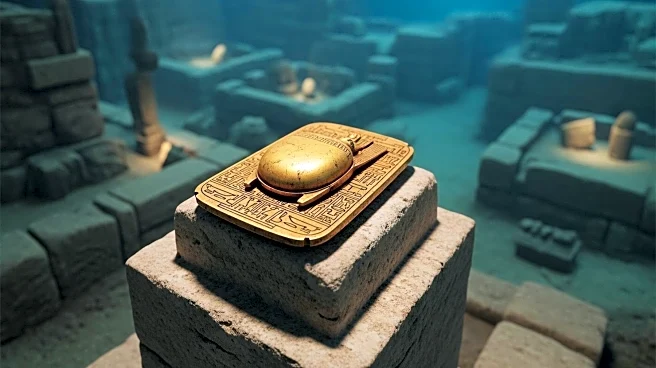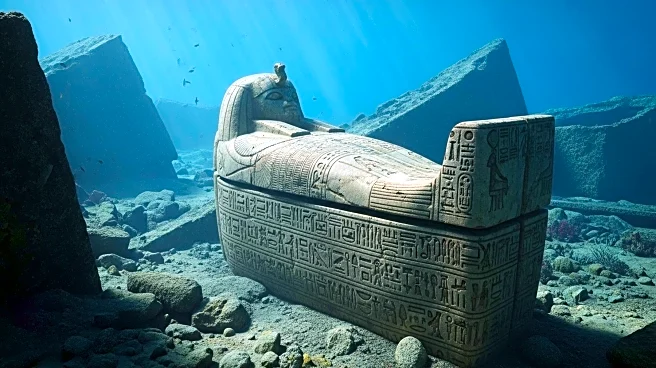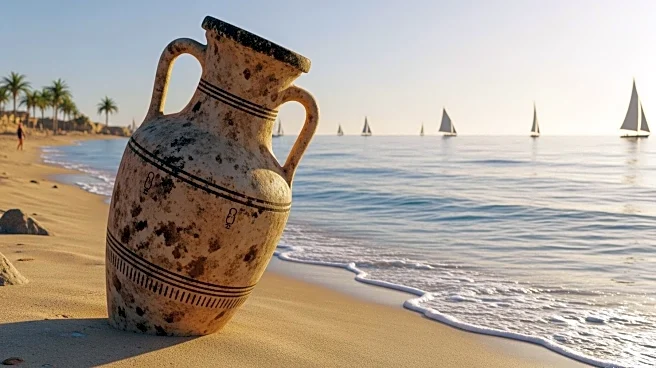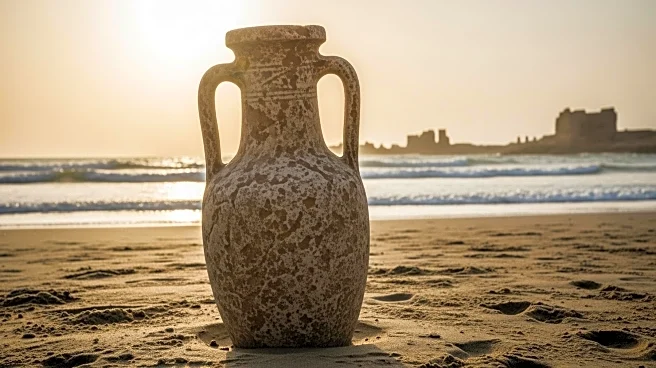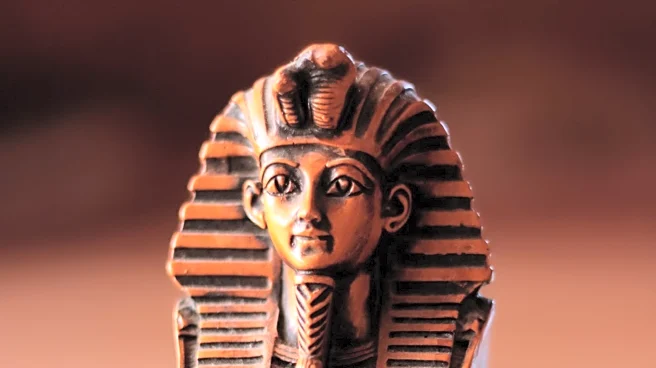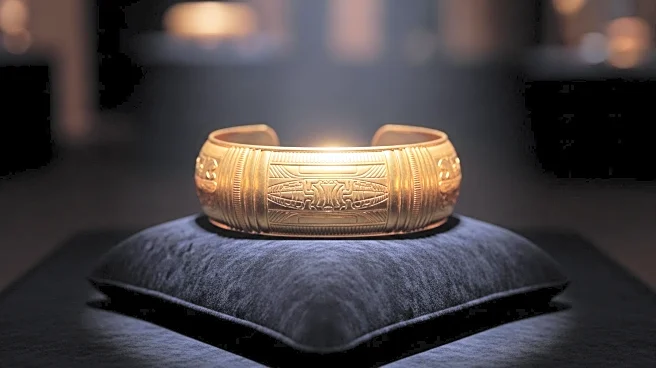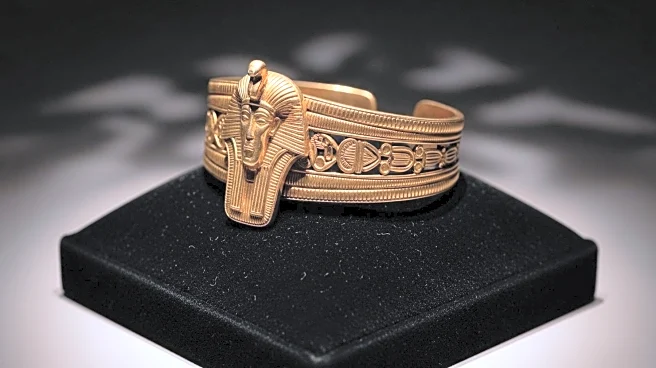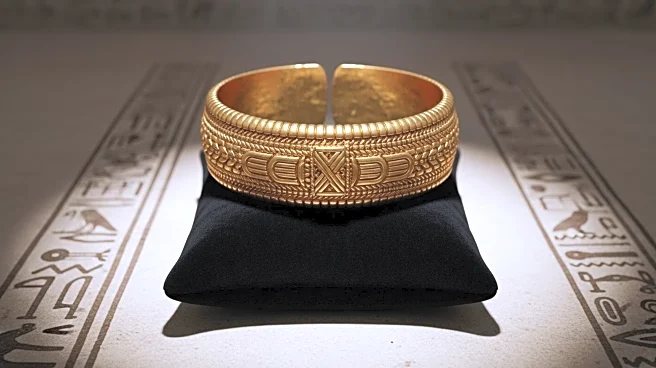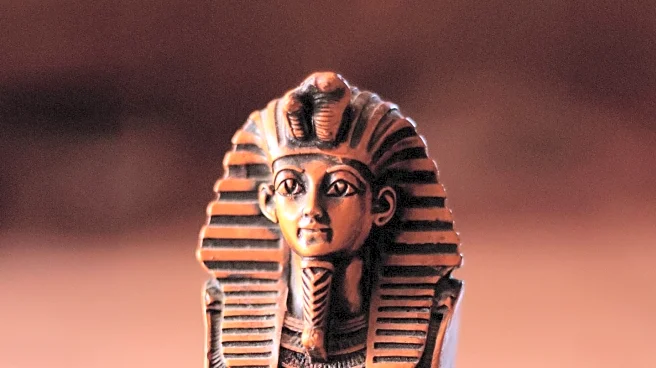What's Happening?
Archaeologist Kathleen Martínez is investigating a sunken port off the coast of Borg El Arab, Egypt, believed to be linked to Cleopatra's tomb. The site, Taposiris Magna, was submerged due to natural disasters and is thought to be a religious center and maritime hub. Martínez's research, supported by sonar mapping and diving expeditions, suggests the port was significant during Cleopatra's reign. The discovery aligns with historical accounts of Cleopatra's burial near a temple of Isis, potentially solving the mystery of her final resting place.
Why It's Important?
The discovery of the sunken port could redefine historical understanding of Cleopatra's burial and the significance of Taposiris Magna. It offers insights into ancient Egyptian religious practices and maritime activities. The research may influence archaeological methods, encouraging exploration of submerged sites for historical evidence. The potential identification of Cleopatra's tomb would be a monumental achievement in archaeology, enhancing knowledge of ancient Egyptian history.
Beyond the Headlines
The investigation raises questions about the preservation of underwater cultural heritage and the challenges of exploring submerged sites. The collaboration with oceanographer Bob Ballard highlights interdisciplinary approaches in archaeology. The discovery may inspire further research into the Ptolemaic dynasty and its impact on Egyptian history.

